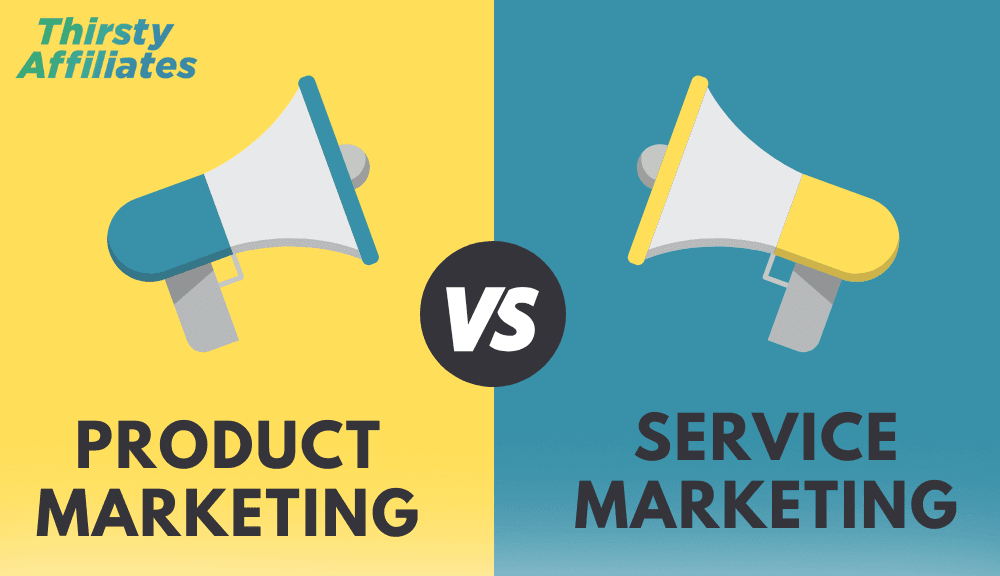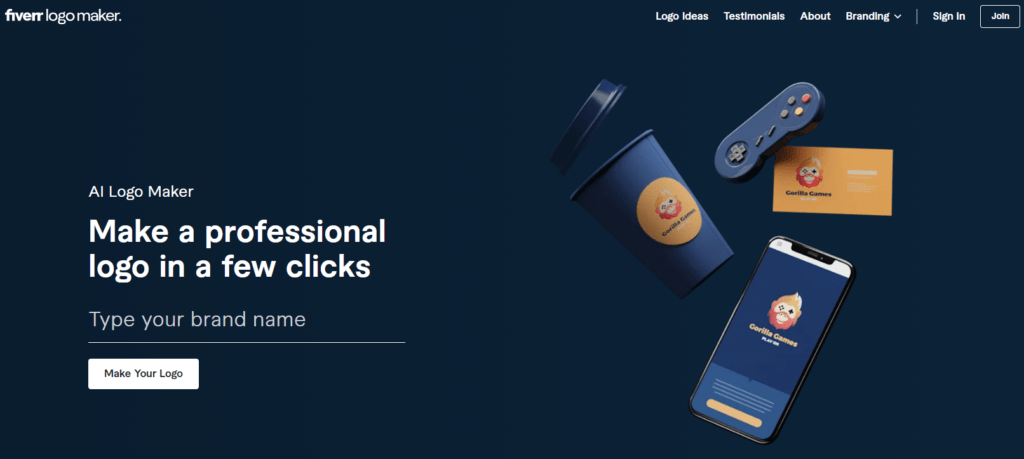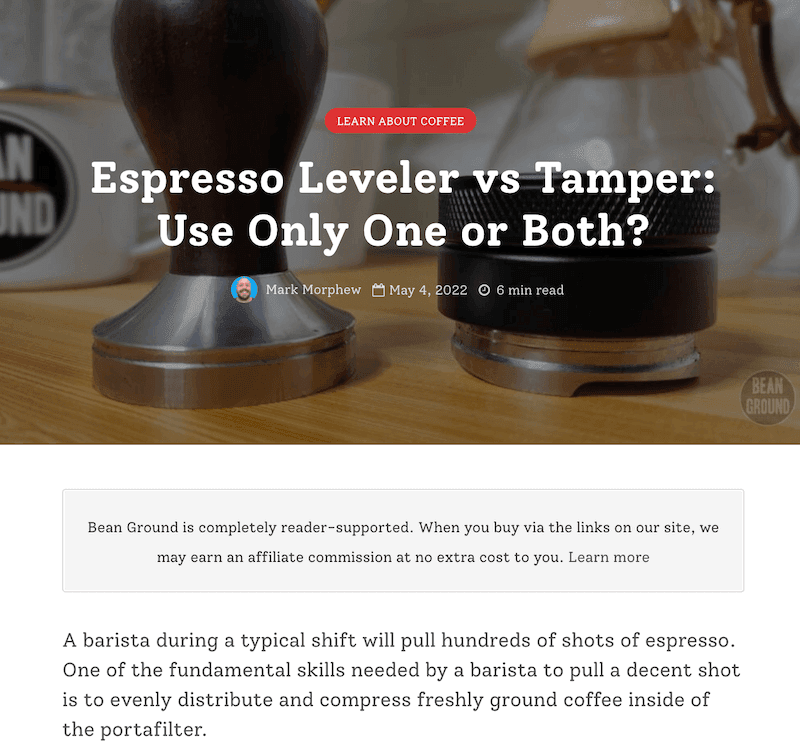Contents

As an affiliate marketer, you partner with companies to promote their unique products or services. However, if you don't know how to properly advertise a service vs a product, it's likely you won't gain many conversions.
When it comes to product marketing, you describe the tangible features of a product. Meanwhile, service marketing focuses more on the experience your customer can expect. By understanding the differences between the two marketing techniques, you can create campaigns that are tailored to each.
In this post, we'll introduce product and service marketing. Then, we'll show you 3 key differences between them so you can determine the best strategy that fits your marketing style. Let's get started!
An Introduction to Product Marketing
Some businesses sell a collection of products in an online store. When you're marketing an affiliate product, you'll pick some of their best items to sell to your audience.
Products are typically physical, “tangible” goods. This means customers will be able to see and touch the product after they buy it. For example, if you run a fashion blog or social media account, you may promote certain clothing pieces, jewelry, or other physical products:

To market an affiliate product, you'll need to define your target audience. It's important to understand your customers' needs and choose the right products to fulfill them.
Then, you can create content that highlights the product's features. This way, your online visitors will click on affiliate links and buy your promoted products.
An Introduction to Service Marketing
Alternatively, other companies don't offer physical products for sale. Instead, they advertise a specific service. This can include healthcare, banking, web design, and much more.
For example, a new business owner may be looking for a way to design a logo. As an affiliate, you can promote a company that performs this service, such as Fiverr Logo Maker:

In a nutshell, service marketing focuses on promoting an experience for customers. Rather than just browsing available products, users can purchase custom services that change based on their requirements.
Product Marketing vs Service Marketing: 3 Key Differences
To set up your business for high conversions, you'll need to know how to promote your affiliate products or services. Since it can be difficult to find the best marketing strategy, let's go over some key differences between product marketing and service marketing!
1. Tangibility
One of the most important differences between products and services is their “tangibility”. Again, tangible products can be touched, seen, smelled, or even tasted. In product marketing, you can display a physical item so customers can see its main features for themselves.
Here's another fashion affiliate marketing example for you: you can write blog posts or create YouTube videos showcasing your favorite outfit pieces. You might show products like jeans, shoes, and shirts. Then, when users click on your affiliate link, they can buy these specific items:

On the other hand, service marketing will often involve explaining the company's service and detailing how this experience can be valuable.
A good example of this is web hosting. Customers won't be able to hold, see, or feel what a web hosting provider has to offer. Instead, they may receive access to a server, website storage space, and other useful services.
It's still very possible to write up a great product review or even a roundup of web hosts. MemberPress (a sister product of ours), has an excellent example of how this is done in their article, “Best Web Host for Membership Sites“.
Recording a video isn't off the table either. You could walk your readers through the visual process of how to build a website, then simply drop your affiliate link in the description:

2. Customization
If you're an affiliate for an online store, it will manufacture products for you to promote. These are usually mass-produced and meet a certain standard of quality. This means many different customers can buy the exact same item.
In other words, what customers see is what they get. You can post affiliate links for clothes, books, or tools and visitors can go buy them:

For product marketing, this quality standard can be assuring to customers. That's because people want to know they're getting what they paid for when buying products online.
On the other hand, there are opportunities for customization in service marketing. Compared to a physical product, services can be more flexible for each customer. Often, they change based on the buyer's unique needs.
As an example, your travel blog can promote a booking service company. Any visitor can click on your affiliate links to start purchasing flights or hotels. Since every person's travel plans are different, each customer will have a unique experience:

Both product and service marketing can offer value to your affiliate customers. To decide between the two, consider whether your audience would need more flexibility and customization in their purchases.
3. Risk Management
Lastly, marketing a product vs a service will have different levels of risk. After a customer buys one of your affiliate products, they might want to return it. Since it is a tangible item, customers will be able to easily send back products after delivery.
With this assurance, customers will often feel more comfortable trusting your recommendations. They can more easily predict the quality of the items you're promoting. If it doesn't match the delivered item, customers can return them to the seller.
However, services are very rarely returnable. For example, you might encourage your visitors to buy monthly or yearly web hosting plans. If they don't want to continue using the service, customers will have to cancel any future payments.
Since services cannot be returned, it's important to offer value to your online visitors. Before partnering with a service-based company, make sure it meets the needs of your target audience. This way, customers will want to sign up for the service and continue using it.
Conclusion
If you want to become an affiliate marketer, you'll have to decide whether you want to focus on advertising products or services. Products can be easier to promote because you can display tangible materials and features. However, services can provide customized and high-value experiences for your audience.
To review, here are the main differences between promoting a product and a service:
- Tangibility. Products are physical items that can be seen and touched by customers. To promote services, you'll have to describe the experience it offers new customers.
- Customization. Customers can buy products knowing that they'll be manufactured with the same level of quality. On the other hand, they might want to receive custom services based on their specific needs.
- Risk management. Since products are tangible, they can be returned to the seller. Alternatively, services usually cannot be taken back.
Do you have any questions about the differences between product marketing and service marketing? Ask us in the comments section!
If you liked this post, be sure to follow us on Twitter, Instagram, Facebook, Pinterest, and LinkedIn! And don't forget to subscribe in the box below.



I have enjoyed your content.Quite educative.Let me know how I can drive traffic to my website.Iam promoting pressure cookers.
Thanks for explaining the differences between product and service marketing – awesome post!
Excellent Article! Thanks for sharing information
You may already be aware of the numerous variations on marketing. Your objectives and target market will have an impact on the type of marketing plan you use. But it will also be influenced by the type of product or service that you are promoting. Different marketing tactics have different goals.
Absolutely great article. and great ideas I have been helped and now I know what I should be doing to improve my page rankings.
Product marketing focuses on highlighting the unique features and benefits of tangible products, while service marketing emphasizes the value of intangible services and the experience they offer. Understanding the key differences between these two types of marketing is critical to crafting the right messaging and tactics that resonate with customers and drive conversions.
Understand the unique features and benefits of your product or service.
Identify your target audience and tailor your marketing strategy to their specific needs and preferences.
Focus on highlighting the tangible features of a product and the intangible benefits of a service.
Utilize different marketing channels and tactics based on the product or service being marketed.
Continuously analyze and adjust your marketing approach based on performance metrics and customer feedback.
oh nice blog . “Unlocking Success: Navigating the Product vs Service Marketing Maze”
In today’s dynamic business landscape, understanding the nuances between product and service marketing is the key to unlocking untapped potential. From tangible goods to intangible experiences, mastering these differences empowers marketers to tailor strategies that resonate with customers on a whole new level.
this article was really good for the insights I was just randomly going through stuff and Im glad I had the energy to read this one, which I don’t really have at times. Thanks for the efforts.